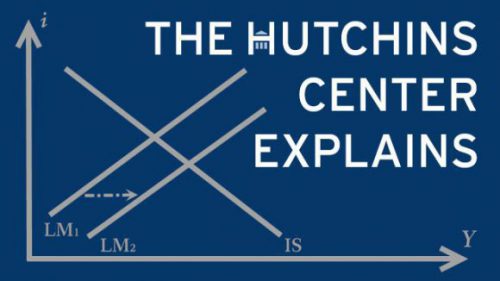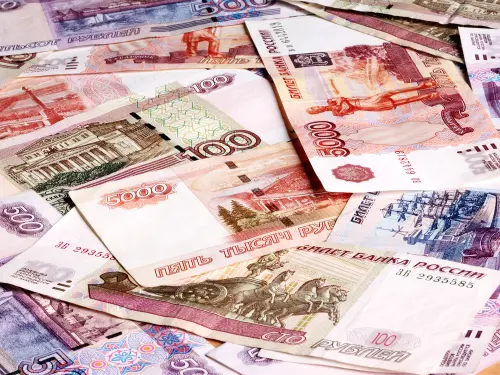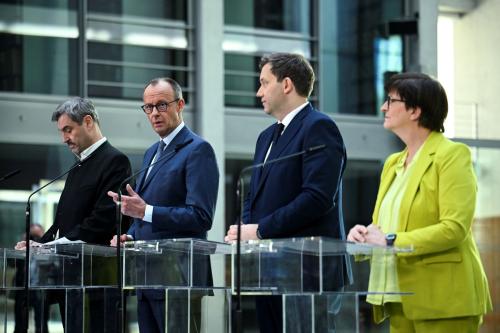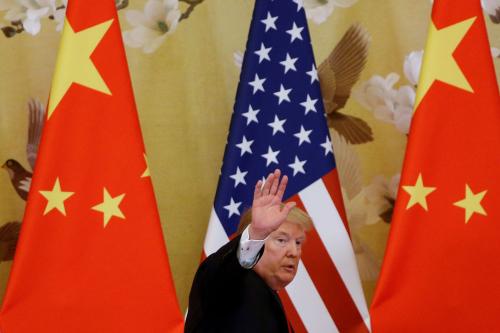This post was originally published in April 2025 and has been updated to reflect developments. (There is also an earlier one, originally published in March 2024.)
After the Russian invasion of Ukraine in February 2022, the U.S. and its allies responded with an economic toolkit designed to strengthen Ukraine and diminish Russia’s war-making capacity. Among the most potent of these tools was to freeze Russia’s foreign exchange reserves and use them as the basis for a large-scale loan to Ukraine. As the Trump administration’s negotiations without America’s allies falter, the future of this economic toolkit is highly uncertain. This post covers recent developments in U.S. and European policy on frozen Russian assets and how they might play into a negotiated peace.
The status of frozen assets
After Russia’s full-scale invasion, the U.S. and its allies froze Russian foreign exchange reserves in their jurisdictions. The Russian Elites, Proxies, and Oligarchs (REPO) Task Force—consisting of the Group of Seven (G7), European Union (EU), and Australia—most recently estimated frozen reserves at $280 billion. Many experts (and the Central Bank of Russia) put the figure between $300 and $330 billion. In 2022, most of the frozen assets were debt securities denominated in euros or U.S. dollars. Euroclear, a Belgian central securities depository, managed approximately $200 billion of those assets on behalf of the Central Bank of Russia. Euroclear manages about 90% of frozen reserves in the EU, while France holds much of the remainder. The U.S. holds around $5 billion.
Most of the debt securities in Euroclear have matured into cash. Euroclear puts the accumulating cash in money markets, where it earns a return at short-term interest rates. In 2024 Euroclear earned roughly $7 billion in interest on this cash, known as “extraordinary revenue.” The government of Belgium collects 25% of this extraordinary revenue—about $2 billion in 2024—and the government has committed to sending it to Ukraine. Separately, in May 2024, the European Council of Ministers—one of the EU’s two legislative bodies—required large central securities depositories, such as Euroclear, to turn over remaining interest revenue to the European Fund for Ukraine. Euroclear made their first payment of roughly $2 billion in July 2024 and made a second similarly sized payment in March 2025.
Neither the nations of the REPO Task Force nor the EU internally have agreed on seizing the frozen reserves outright, largely citing legal barriers and the fear of eroding international norms. In April 2024, President Biden signed the Rebuilding Economic Prosperity and Opportunity for Ukrainians Act (REPO Act), which authorized seizure in the U.S. contingent upon G7 cooperation, but the Biden administration did not use this authority. In lieu of seizure, leaders agreed to the Extraordinary Revenue Acceleration (ERA) loan at the June 2024 G7 summit. Under the plan, the G7 and the EU collectively lent $50 billion to Ukraine, which will be repaid with the interest on frozen Russian assets. The U.S. and EU each committed about $20 billion; Canada, the U.K., and Japan provided the remainder, about $3 billion each. The Biden administration disbursed the U.S. portion of the loan in the weeks before Biden left office. The U.K. and France unveiled their first loans in early March. According to the European Commission, further extraordinary revenue from Euroclear “will be provided to Ukraine principally to enable it to ensure the repayment of the funds it receives from the G7-led Extraordinary ERA initiative, while a limited portion will continue to be channeled through the European Peace Facility.”
The U.S. stance on seizure
The Trump administration has not articulated a policy on frozen Russian assets. Secretary of State Macro Rubio and then-National Security Advisor Mike Waltz have mentioned the issue, both mistakenly saying that the assets have already been seized. Special Envoy Keith Kellogg has repeatedly referenced using Russian assets. Asked whether asset seizure is administration policy, Kellogg said “I think the options are to apply more pressures—I think that’s good. I don’t think it’s been done, but I think the opportunity is there to do it, and that’s going to be up to the president of the United States.” Vice President JD Vance has argued against seizure on the grounds that it could harm the dollar.
Several senior members of Congress favor seizing the frozen assets. At the Munich Security Conference in February 2025, Senators Jim Risch (R-ID) and Jeanne Shaheen (D-NH), chair and ranking member of the Foreign Relations Committee, and Senators Lindsey Graham (R-SC) and Sheldon Whitehouse (D-RI) wrote in a press release that “America and our transatlantic allies must unlock more support for Ukraine, through the actual seizure of the underlying frozen assets or through, for instance, using those assets as collateral for another, larger loan for Ukraine.” In March, Senators Graham, Todd Young (R-IN), Richard Blumenthal (D-CT), and Tim Kaine (D-VA) wrote to Secretary Rubio asking him to clarify the administration’s seizure policy. Among other things, they asked if the administration supported seizure, whether it would push our G7 allies to join us in seizure, and whether it supported using the money to purchase military equipment.
The EU stance on seizure
U.K. Foreign Minister David Lammy supports outright seizure, as did his predecessor. President Andrzej Duda of Poland supports seizure, and the Estonian government is actively lobbying its EU partners on the matter with the support of former Estonian PM and top EU diplomat Kaja Kallas. Others are more cautious. President Emmanual Macron of France publicly maintains that seizure is impermissible under law, although France appeared to be in talks with the U.K. and Germany about a plan to seize the assets should Russia breach some future deal. German chancellor Fredrich Merz has reportedly signaled interest. Some German officials worry that asset seizure could lend credence to ongoing World War II reparations claims. European Central Bank (ECB) President Christine Lagarde is also hesitant to seize Russian assets for fear of tarnishing the euro; the sovereign debt crisis is still fresh in the minds of many. The Belgian government in particular fears that financial retaliation against Euroclear could be catastrophic. Belgian Prime Minister Bart De Wever called seizure “an act of war.” The G7 and EU have committed to keeping the assets frozen until Russia has paid its reparations in full. Russian-sympathetic governments in the EU, such as Hungary and Slovakia, regularly threaten the EU sanctions regime, continuation of which requires a unanimous vote every six months.
The Russian stance on seizure
Russian officials say seizure would violate international law and that Russia would challenge seizure in all legal venues possible. Russia has not, however, challenged the ERA loan in court despite similar rhetoric. Officials have also threatened retaliatory seizure of roughly $300 billion worth of assets in Russia. Russia has already confiscated physical assets from European companies, and Russian courts seized $440 million from J.P. Morgan accounts in Russia hours after President Biden signed the REPO Act.
It’s unclear whether Russia expects to get the frozen assets back. Reuters reported in February that Russia was prepared to concede the assets in a peace settlement on the condition that Russia’s primary demands—that Ukraine concede territory and eschew security guarantees—are met, and that some of the money goes to Russian-controlled Ukraine. If the assets aren’t used in the negotiations directly, they would likely remain frozen for decades waiting for Russian reparations or unless further Russian aggression motivates Europe to reconsider seizure, as Macron’s proposal suggests. Philip Zelikow, Senior Fellow at the Hoover Institution and former senior U.S. diplomat, argues, “In private, the Russians have already written this money off.”
The role of assets in future negotiation
The U.S. and Russia excluded Europe and Ukraine from talks in early 2025, which decreases the likelihood that the assets will be a factor in negotiations. The U.S. and Russia might strike a deal using the assets and try to force Europe to go along with it after the fact. But the EU manages most of the frozen reserves, and Ukraine has the ultimate legal claim on the assets. As a practical matter, using the assets, either as an inducement for Russia or to pressure Russia by mobilizing the money to reinforce Ukraine, would require EU and Ukrainian participation. The positioning of the assets also means that the EU and Ukraine have the option to use the assets in separate negotiations with Russia if Ukraine deems the results of U.S.-Russian negotiations unacceptable.
Should the EU join or start separate negotiations with Russia, they probably will not be willing to bring the assets to the table unless Russia offers significant concessions. The G7 commitment to keeping the assets frozen, general distrust of Russia, and the outstanding ERA loan would make it politically difficult for European leaders to return the assets. Should the EU act on assets, it will most likely pursue further loans instead of outright seizure, regardless of U.S. participation. Using the frozen assets against Russia increases the credibility of Europe’s commitment to Ukrainian security and emphasizes the European position that Russia’s current terms are unacceptable.
Falling interest rates would prolong the ERA loan repayment timeline which poses a risk because European leaders may not be able to keep the assets frozen indefinitely, in part because the unanimity of EU member states to maintain sanctions is uncertain. Belgium is considering domestic options if EU sanctions lapse. Political sentiment can shift, and Russia will continue to meddle in European politics, including by exerting pressure on friendly states like Hungary and Slovakia to vote down sanctions. For example, Slovakia is now “last in line” for Russian gas after gas shipments through Ukraine ended, and may not be willing to continue voting against Russian interests. This problem is not new, but the more influence Russia has in the EU, the more likely Russia can dislodge the sanctions regime over time.
Managing the assets in the future
European officials are now considering a scheme that would transfer the assets in Euroclear to an EU-managed investment vehicle that maintains the distinction between Russian assets and extraordinary revenue. This plan is attractive to EU leaders for three main reasons. First, through this vehicle, the EU could invest the Russian money into higher-yield assets that deliver more revenue to ERA loan repayment and Ukraine. Increasing extraordinary revenue is especially important as the EU struggles to find budgetary room for more direct support. Second, this plan would separate the status of Russian assets from the repeated votes by EU member states to renew sanctions, eliminating Hungary’s leverage and ensuring Russia does not see the money until it pays reparations or otherwise negotiates. EU officials hope to pass the measure as a simple majority lest they face the same opposition from Hungary. Third, maintaining the distinction between Russian and non-Russian money may help the scheme avoid legal problems and could help convince dubious nations by retaining the ability to reverse course—say, if courts quash the plan.
The Brookings Institution is committed to quality, independence, and impact.
We are supported by a diverse array of funders. In line with our values and policies, each Brookings publication represents the sole views of its author(s).









Commentary
What is the status of Russia’s frozen sovereign assets?
June 24, 2025